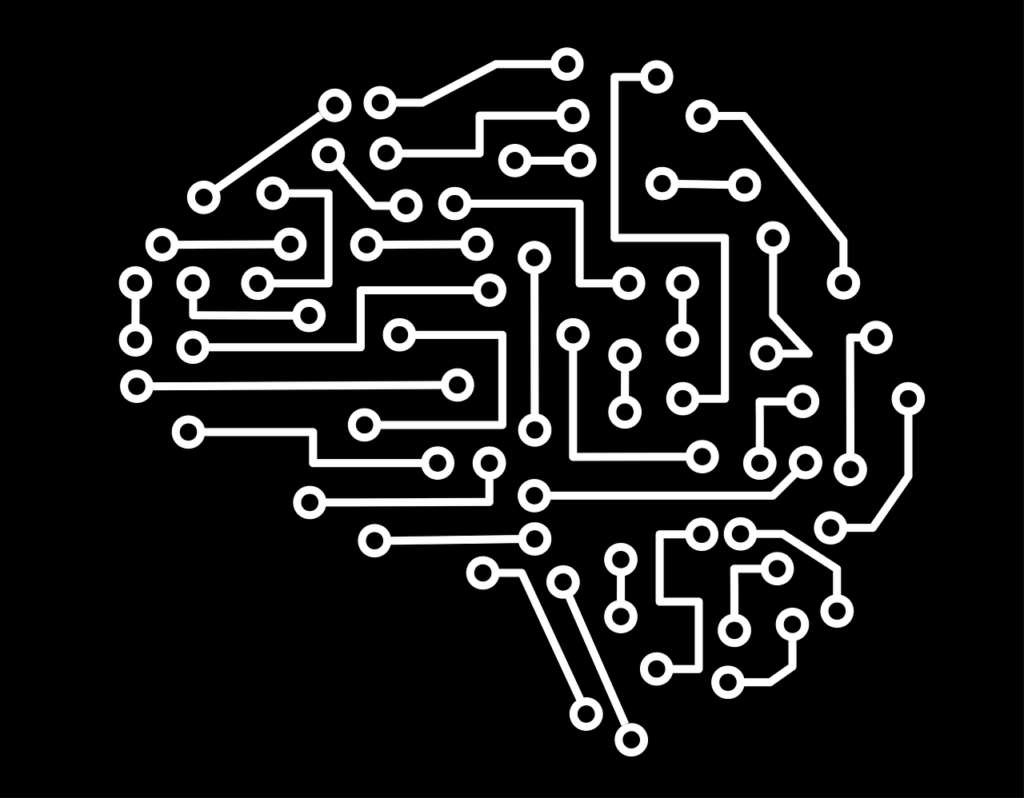Have you ever wondered how data scientists make predictions using historical data?

Understanding Regression Algorithms
Regression algorithms are a vital part of data science, primarily used for forecasting and modeling relationships between variables. They allow you to predict an outcome based on input features. In this article, you’ll gain a thorough understanding of Linear and Polynomial regression, two foundational techniques in predictive modeling.
What is Regression?
At its core, regression is a statistical method used to understand the relationship between a dependent variable (the one you’re predicting) and one or more independent variables (the input features). You can think of it as a way to model how changes in independent variables can lead to changes in the dependent variable.
Importance of Regression in Data Science
In the world of data science, regression plays a crucial role. It helps data scientists interpret and understand data, make predictions, and uncover trends. Whether you’re predicting housing prices, stock prices, or customer behavior, regression algorithms provide the framework necessary for these tasks.
Linear Regression: The Basics
What is Linear Regression?
Linear regression is one of the simplest types of regression algorithms. It assumes a linear relationship between the dependent variable and one or more independent variables. This means that as the inputs change, the output changes in a straight-line manner.
The Linear Regression Equation
The equation for linear regression can be expressed as:
[ Y = b_0 + b_1X_1 + b_2X_2 + … + b_nX_n ]
In this equation:
- (Y) is the predicted value (dependent variable).
- (b_0) is the y-intercept (the point where the line crosses the y-axis).
- (b_1, b_2, …, b_n) are the coefficients that represent the change in (Y) for a one-unit change in (X).
- (X_1, X_2, …, X_n) are the independent variables.
When to Use Linear Regression
You should consider using linear regression when:
- There is a linear relationship between the independent and dependent variables.
- The residuals (the differences between observed and predicted values) are normally distributed.
- The independent variables do not exhibit multicollinearity (high correlation with each other).
Benefits of Linear Regression
- Simplicity: Linear regression is easy to understand and implement. It’s a great starting point for beginners in data science.
- Interpretability: The coefficients provide insights into the relationship between variables, allowing for easy interpretation.
- Efficiency: Linear models can be computationally less intense compared to other algorithms.
Limitations of Linear Regression
- Linearity Assumption: It fails to capture more complex relationships that are not linear.
- Sensitivity to Outliers: Outliers can significantly impact the regression coefficients, leading to misleading results.
- Assumption of Homoscedasticity: The variance of the residuals should remain constant across all levels of the independent variables.

Polynomial Regression: Understanding Complexity
What is Polynomial Regression?
Polynomial regression extends linear regression by allowing for a non-linear relationship between the independent and dependent variables. Instead of fitting a straight line, polynomial regression fits a curve to the data.
The Polynomial Regression Equation
The equation for polynomial regression could look like:
[ Y = b_0 + b_1X + b_2X^2 + b_3X^3 + … + b_nX^n ]
Here, the (X^n) term allows the model to capture non-linear relationships, where (n) represents the degree of the polynomial.
When to Use Polynomial Regression
Consider polynomial regression when:
- You suspect a non-linear relationship between variables.
- The scatter plot of the data suggests a curvilinear pattern.
- You are interested in capturing interactions between variables.
Benefits of Polynomial Regression
- Flexibility: Polynomial regression can model complex relationships between variables, making it suitable for a wide range of applications.
- Better Fit: By including higher-degree terms, it can provide a better fit for data that exhibits non-linear behavior.
Limitations of Polynomial Regression
- Overfitting: Adding too many polynomial terms can lead to overfitting, where the model performs well on training data but poorly on unseen data.
- Interpretation Difficulty: The interpretation of coefficients in a polynomial regression is less straightforward compared to linear regression.
- High Complexity: As the degree of the polynomial increases, the model complexity increases, making it harder to explain the results.
Visualizing Regression Models
Scatter Plots for Linear Regression
To understand linear regression, it can be helpful to visualize the relationship using scatter plots. You can plot the independent variable on the x-axis and the dependent variable on the y-axis. A best-fit line will indicate the relationship.
Curves for Polynomial Regression
For polynomial regression, your graph will feature a curve fitting the data points. You can visualize how the curve changes as you increase the degree of the polynomial. This visual can help identify if the polynomial captures the underlying relationship well.

Evaluation of Regression Models
Key Metrics for Linear Regression
When evaluating a linear regression model, several key metrics come into play:
| Metric | Description |
|---|---|
| R-squared | Indicates the proportion of variance explained by the model. |
| Adjusted R-squared | Adjusted for the number of predictors in the model. |
| Mean Absolute Error | The average of the absolute differences between predicted and actual values. |
| Root Mean Squared Error (RMSE) | Measures the average magnitude of the errors. |
Key Metrics for Polynomial Regression
You can use similar metrics for polynomial regression, but be careful when interpreting R-squared. A very high R-squared might indicate overfitting if the polynomial has too many degrees.
Importance of Cross-Validation
Cross-validation is essential for both linear and polynomial regression models. It tests the model on unseen data, providing a better understanding of its generalization capabilities. It helps you avoid overfitting and ensures your model performs well in practical applications.
Implementing Regression Algorithms
Tools for Regression Analysis
There are several tools and programming languages commonly used for regression analysis, including:
- Python: Libraries like Scikit-learn, Statsmodels, and Pandas are excellent for implementing regression models.
- R: Known for its statistical packages, R is a popular choice among statisticians and data scientists.
- Excel: For basic regression analysis, Excel offers built-in functions and tools.
Steps to Implement Linear Regression in Python
-
Import Libraries: Begin by importing the necessary libraries.
import pandas as pd import numpy as np from sklearn.model_selection import train_test_split from sklearn.linear_model import LinearRegression
-
Prepare Your Data: Load your dataset and split it into training and testing sets.
data = pd.read_csv(‘your_data.csv’) X = data[[‘independent_variable’]] y = data[‘dependent_variable’] X_train, X_test, y_train, y_test = train_test_split(X, y, test_size=0.2)
-
Create and Train the Model: Initialize the model and fit it on the training data.
model = LinearRegression() model.fit(X_train, y_train)
-
Make Predictions: Use the model to predict the values using the testing set.
predictions = model.predict(X_test)
-
Evaluate the Model: Calculate the evaluation metrics to assess performance.
from sklearn.metrics import mean_absolute_error, mean_squared_error, r2_score print(mean_absolute_error(y_test, predictions)) print(mean_squared_error(y_test, predictions, squared=False)) # RMSE print(r2_score(y_test, predictions))
Steps to Implement Polynomial Regression in Python
-
Import Libraries: Make sure to import the required libraries.
from sklearn.preprocessing import PolynomialFeatures
-
Prepare Your Data: Load and split your dataset as you would for linear regression.
-
Create Polynomial Features: Instantiate
PolynomialFeaturesand transform your data.poly = PolynomialFeatures(degree=2) # Change degree as needed X_poly = poly.fit_transform(X_train)
-
Train the Model: Fit a linear regression model to the transformed features.
model = LinearRegression() model.fit(X_poly, y_train)
-
Make Predictions: Don’t forget to transform your test features before making predictions.
X_test_poly = poly.transform(X_test) predictions = model.predict(X_test_poly)
-
Evaluate: Use the same evaluation metrics to gauge performance.
Conclusion
Regression algorithms are essential tools in data science, enabling predictions and insights that drive better decision-making. Whether using linear or polynomial regression methods, understanding their principles, benefits, and limitations will enhance your data analysis skills.
As you practice, remember that the choice of the algorithm depends on the nature of your data and the specific task at hand. By mastering these techniques, you’ll be better prepared to tackle real-world problems using data-driven strategies. Always keep experimenting and learning—you’re on an exciting journey in the world of data science!

